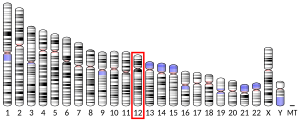PRH1
Appearance
| PRH1 | |||||||||||||||||||||||||||||||||||||||||||||||||||
|---|---|---|---|---|---|---|---|---|---|---|---|---|---|---|---|---|---|---|---|---|---|---|---|---|---|---|---|---|---|---|---|---|---|---|---|---|---|---|---|---|---|---|---|---|---|---|---|---|---|---|---|
| Identifiers | |||||||||||||||||||||||||||||||||||||||||||||||||||
| Aliases | PRH1, PA, Db-s, PIF-S, PRH2, Pr1/Pr2, proline-rich protein HaeIII subfamily 1, proline rich protein HaeIII subfamily 1, PRP-1/PRP-2 | ||||||||||||||||||||||||||||||||||||||||||||||||||
| External IDs | OMIM: 168730; GeneCards: PRH1; OMA:PRH1 - orthologs | ||||||||||||||||||||||||||||||||||||||||||||||||||
| |||||||||||||||||||||||||||||||||||||||||||||||||||
| |||||||||||||||||||||||||||||||||||||||||||||||||||
| |||||||||||||||||||||||||||||||||||||||||||||||||||
| Wikidata | |||||||||||||||||||||||||||||||||||||||||||||||||||
| |||||||||||||||||||||||||||||||||||||||||||||||||||
Salivary acidic proline-rich phosphoprotein 1/2 is a protein that in humans is encoded by the PRH1 gene.[3][4]
References
[edit]- ^ a b c ENSG00000277823 GRCh38: Ensembl release 89: ENSG00000231887, ENSG00000277823 – Ensembl, May 2017
- ^ "Human PubMed Reference:". National Center for Biotechnology Information, U.S. National Library of Medicine.
- ^ Kim HS, Maeda N (Jun 1986). "Structures of two HaeIII-type genes in the human salivary proline-rich protein multigene family". J Biol Chem. 261 (15): 6712–8. doi:10.1016/S0021-9258(19)62674-8. PMID 3009472.
- ^ "Entrez Gene: PRH1 proline-rich protein HaeIII subfamily 1".
Further reading
[edit]- Friedman RD, Merritt AD (1990). "Partial purification and characterization of a polymorphic protein (Pa) in human parotid saliva". Am. J. Hum. Genet. 27 (3): 304–14. PMC 1762868. PMID 803013.
- Maeda N, Kim HS, Azen EA, Smithies O (1985). "Differential RNA splicing and post-translational cleavages in the human salivary proline-rich protein gene system". J. Biol. Chem. 260 (20): 11123–30. doi:10.1016/S0021-9258(17)39156-1. PMID 2993301.
- Strausberg RL, Feingold EA, Grouse LH, et al. (2003). "Generation and initial analysis of more than 15,000 full-length human and mouse cDNA sequences". Proc. Natl. Acad. Sci. U.S.A. 99 (26): 16899–903. Bibcode:2002PNAS...9916899M. doi:10.1073/pnas.242603899. PMC 139241. PMID 12477932.

